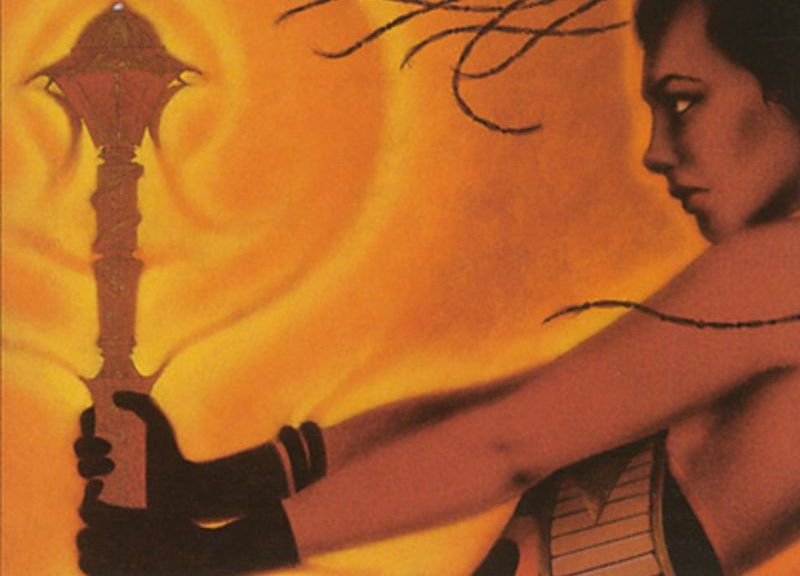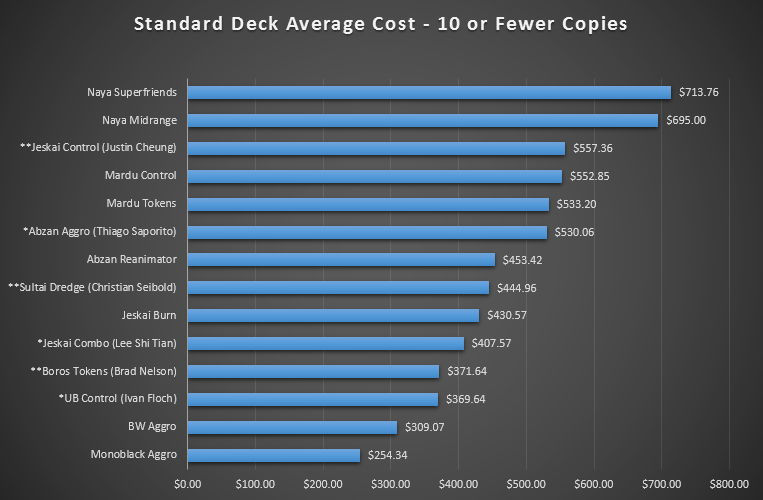By: Jared Yost
EDITOR’S NOTE: MTGPrice.com will have extensive live coverage of the #mtgfinance side of GP:NJ Friday through Sunday. This includes dealer interviews and live blogging from the floor. Be sure to check devblog.mtgprice.com all weekend long!
In preparation for Grand Prix New Jersey coming up later this week I thought I might share with you some of my ideas for what to expect at the tournament.
Vendor Paradise
There are going to be twenty vendors at the event – twenty vendors! – which means there are going to be many different opportunities for buylisting and arbitrage during the weekend. Buylisting almost becomes an art rather than a science during a GP.
Of course, the best time to visit the vendors is early Friday morning if you want the best deals and most opportunities to sell to them. At the beginning of the event the vendors will be looking to stock up not only for the weekend but to increase their general inventory. However, as the weekend goes on, fewer and fewer vendors are prone to offer high buylist prices on staples.
Besides buylisting cards, GP’s are a great opportunity to pick up swag. What I mean by swag are sleeves, dice, bags, binders, and other Magic related items that aren’t the cards themselves. Lots of vendors will be looking to undercut the others for items like Dragon Shield sleeves, Ultra Pro binders, and more.
Binder Preparation
You will want to give yourself plenty of time to gather all of the Legacy staples you want to trade at the event. Prices are going to be spiking the weekend of the tournament, for at least a select few cards. If you are keeping an eye on the price changes you will be able to capitalize on cards that experience short term spikes by trading them or buylisting them to the vendors.
Beyond Legacy, you should also prepare another binder for Modern and Standard trades. There will be plenty of opportunity to trade higher valued Theros block cards during the weekend like Elspeth, Sun’s Champion, Hero’s Downfall, Kiora, the Crashing Wave, and Ajani, Mentor of Heroes. There are going to be side events for Modern and Standard plus vendors will be picking up many of the Standard staples, in addition to Legacy and Modern, to increase their inventory.
Here are some cards that will be good to have for the event. I marked the format(s) the card will be desirable in. The more formats a card is desirable in the higher the chance you will have of being able to trade it. You should be able to trade or buylist all of the Legacy cards at some point during the weekend.
I would also like to mention some decks that I think many different players will adopt for the Legacy main event. The decks are on the cheaper side to build and players could be looking for copies of random cards that appear in the decks. If you prepare well, you will be able to trade some of the more obscure pieces to someone looking to play the deck.
- U/R Delver
- Dredge
- Belcher
- Elves
- Death & Taxes
- Merfolk
- Affinity
I think many players will want to use these decks because they are fairly straightforward to pilot and offer a pretty simplistic game plan in order to win. Check out a few lists online and see if you have any of the pieces of the decks. If you do you can probably trade them away during the weekend if you currently aren’t using them.
Besides decks, cards that show up in sideboards will also be nice to have for trades. Some cards in this list include:
- Grafdigger’s Cage
- Pithing Needle
- Flusterstorm
- Rest in Peace
- Null Rod
- Blood Moon
- Surgical Extraction
- Sulfuric Vortex
- Wear / Tear
- Submerge
- Engineered Explosives
- Krosan Grip
- Ethersworn Canonist
- Golgari Charm
- Meddling Mage
- Cabal Therapy
- Price of Progress
By no means is this an extensive list but it does reflect many of the popular choices for sideboards.
Bulk Drop Off
Vendors are pretty happy to buy bulk at these types of events, especially bulk rares. If you have a stack of them lying around that you’ve been looking to get rid of a GP is a great place to do it. Similar to buylisting, different vendors have different goals about how they want to buy bulk. There will be plenty of pricing options available for getting rid of it. Bulk foils are also pretty desirable and you should be able to get a decent quote if you shop around.
Don’t be afraid to barter. There are plenty of other vendors at the event and most vendors will be open to reasonable offers. The place will be crowded and the vendors are going to want to get things over as fast as possible but it doesn’t mean that you have to feel pushed into making a deal you don’t want. Feel free to walk away if you’re not comfortable. There will be plenty of opportunities throughout the weekend.
Similar to buylisting, getting rid of bulk will be much easier Friday morning compared to Saturday or Sunday. By Saturday and Sunday vendors will already be dealing with piles of cards so the chances of getting a deal will be harder and harder the further you try from Friday.
Discount Binders from Vendors
Grand Prix’s are great places for vendors to get rid of cards that they have a hard time moving locally if they don’t have a big online presence. Several vendors will have $1 Binders, $2 Binders, $5 Binders, etc. where they will put a ton of random cards into and hope to sell them during the event. Many times, staples of formats will be in these binders and you should be able to get good deals on otherwise higher prices at other stores. For example, at Grand Prix Richmond I saw cards like Scapeshift and Hero of Bladehold in these type of binders. It’s a pretty sweet deal if you take a few minutes out of your time to browse the binders.
One caveat with this plan is that if you are looking for NM condition than the discount binders may not be for you. There is usually a reason that these cards are in the binders in the first place. Foils with some scuffing, cards that are SP or even MP, and tons of cards that you probably aren’t interested in that you still have to look through will usually be prevalent. Don’t be discouraged though, if you are one to pick through bulk to find gems then browsing these binders should be a walk in the park in comparison.
Final Thoughts
Most of all, have fun at the event. Since there are tons of people be aware of your surroundings and keep a close watch on anything you bring to the event. I’ll be thinking carefully about what exactly I want to bring to an event of this size and so should you. I find that bringing less is much less stressful (barring bulk, of course) and helps me focus on other activities like playing, participating in events, and bargain hunting through the various vendors.
GP’s are pretty much the best place to find deals at and unfortunately there are hardly any Legacy GP’s anymore. This is going to be the best opportunity for many of us in some time to sell off any unused Legacy staples, or pick up those remaining staples we’ve been looking for to complete a deck or add to our collection.
Good luck to any playing in the main event, and safe travels to those flying in and driving four or more hours. Your dedication is what makes Magic great!
Track your collection's value over time, see which cards moved the most, track wishlists, tradelists and more. Sign up at MTGPrice.com - it's free!





